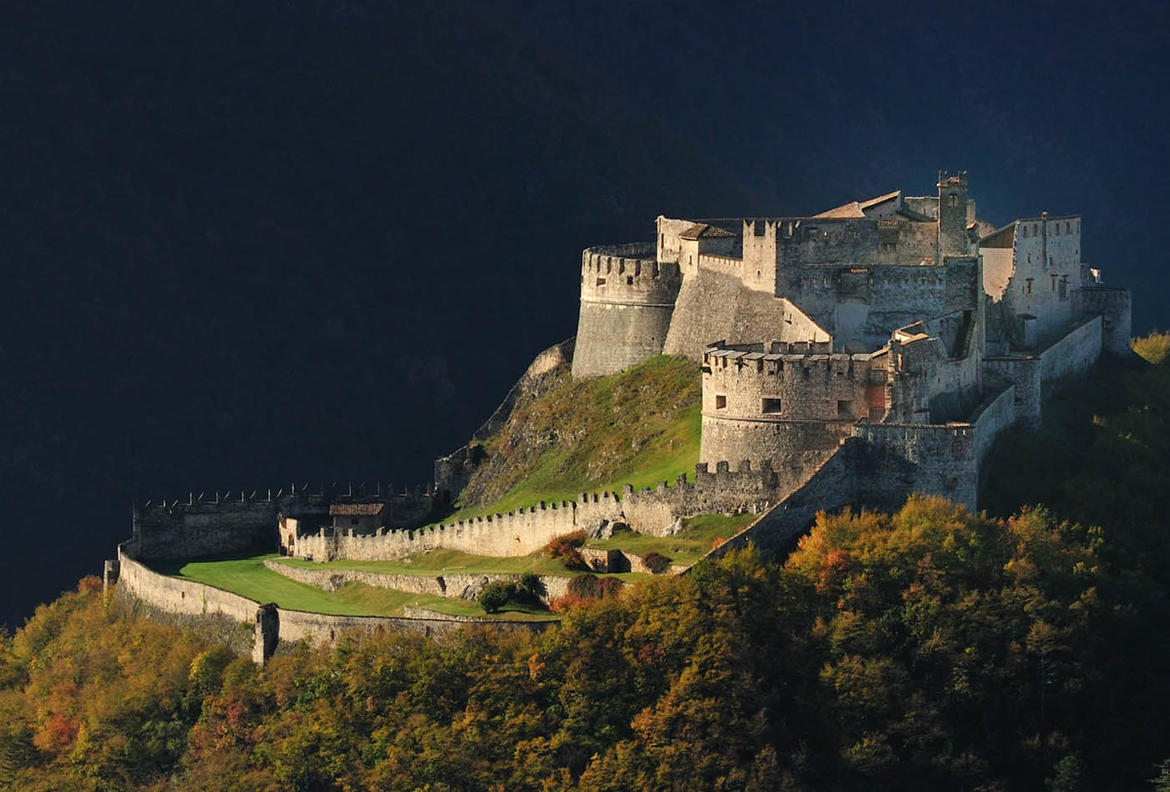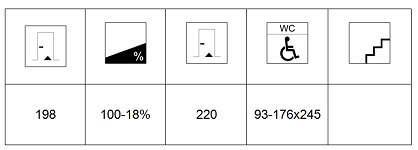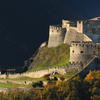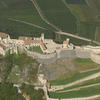Beseno castle
Castel Beseno occupies an entire hilltop dominating the Valle dell'Adige, between Rovereto and Trento, and it can be reached by going through Besenello. Many historical battles took place in this fortress - i.e. the 1487 battle between Trentino troops and the Venetians, as well as the armed battles between the French revolutionists and the Austrians in the two world wars-. In 1973 the Trapp counts donated the Beseno castle to the Autonomous Province of Trento which carried out extensive re-construction works.

Castel Beseno is the largest fortified complex in Trentino and today a most fascinating showcase for exhibitions and shows.
Castel Beseno occupies an entire hilltop dominating the Valle dell'Adige, between Rovereto and Trento, and it can be reached by going through Besenello. Besides its grandeur this castle captures the visitors' attention because of its evocative and fascinating atmosphere. Temporary exhibitions, cultural events and period costume pageants are held here, in the exceptional scenario of the vast Campo dei Tornei (Tournament Field) which is currently a well-groomed garden. Many historical battles, from the wars between fractions with the Veronesi in the 12th and 13th centuries to the battle of 1487 between Trentino troops and the Venetians, as well as the armed battles between the French revolutionists and the Austrians in the two world wars, took place in this fortress. In 1973 the Trapp counts donated Castel Beseno to the Autonomous Province of Trento which carried out extensive re-construction works.
The large lunated ramparts distinguishing Castel Beseno go back to the 16th century. The main doorway had a drawbridge and when entering the castle you can still see three gunports in the first courtyard. In the large square the gunpowder deposit house now holds a room for visitor information and audiovisual projections. To the side you can see the clock tower and the hayloft. Beyond the central part of the Castle you reach the castle dwellers' residence. The feudal complex originally was made up by three turreted nuclei on the two extreme rises of the hill. The Casa del Vescovo (House of the Bishop) and Palazzo nuovo (New Palace) are located in the third nucleus.
Notes on the accessibility to the site
From the car park, access road (about 300 metres) of unpaved surface and an average gradient of 18%. leads to the castle. To park closer, please contact the staff in advance (they need to check the characteristics and suitability of the vehicle). Display the disabled parking card. The indicated ramp is a stretch of dirt road (about 100 metres long), between the first and the second door. The first portal leads to an uneven stone-paved path (4 metres long). The access to the internal part of the castle is through Lizza path: 120 m long approximately. Flat path with a very thick gravel bottom. Passages to the arches, 80 cm wide, with steps preceded by average slopes of 10%, paved with very irregular stone. The courtyard and the indoor spaces can be reached from Sala Foto: At the entrance there are 2 external steps (16 and 18 cm high), a door wide 92 cm. and one internal step ( 8 cm high); on the way out, there are 3 wide steps (9,12 and 20 cm high).The courtyard bottom is covered by thick gravel. The access to South Bastion (grassed bottom) is via one step 8 cm high. All the halls on the ground floor are accessible via one or two steps 5 to 22 cm. High. The indicated staircase is the only way to visit the rooms on the upper floors and the pathways. The access to Jousting tilt Yard ( grassed bottom) is 184 cm wide. The indicated toilets are at the end of the Jousting tilt Yard and are fitted with grab bars. Other accessible toilets are located in the inner courtyard, accessible by a step 18 cm high, can be reached by a gravel path 25 cm long and a gradient of 17%. (doorway 89 cm wide, room dimensions (195 x168cm). The second way to access the internal area of the castle is through a compact gravel road (slope: 16%): before the doors, there are two short stretches (approximately 10 m long) paved with uneven, irregular and slippery stones (max. slope: 31%).
Information collected by the staff of the Cooperative Handicrea







